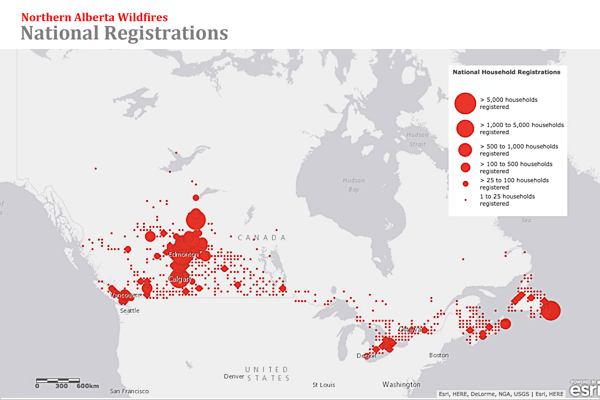In an emergency, people are on the move. They evacuate to seek shelter and safety, first in neighbouring towns and sometimes travelling even further away. We witnessed this during the evacuation of over 80,000 people from Fort McMurray and other parts of Wood Buffalo in 2016. The Canadian Red Cross registered and provided shelter and assistance to thousands of people who evacuated the affected region and stayed in cities and towns across Alberta and throughout Canada in the weeks and months following the Alberta fires.

This map illustrates how residents from Fort McMurray dispersed after being evacuated during the 2016 Alberta fires.
When people are on the move following a disaster, it’s more difficult for humanitarian organizations to determine where aid is needed. Yet that’s when aid is most desperately needed. That’s where Facebook’s aggregated and anonymized data can help paint a clearer picture of population density, population movement and the use of safety check in the hours and days following the emergency.Data from Facebook will allow the Red Cross to understand patterns of movement of people in real time without comprising the privacy of individual Facebook users. The Red Cross won’t know where any one individual is located with this data, but will be empowered with more accurate information to determine where to send relief items, volunteers and set up shelters.
This short video helps explain how data can help in disasters.
This new tool will be most useful of course in areas where Facebook is broadly used and where networks remain available after an emergency. It’s not the only source of information available to help guide the response in a disaster, but it’s one more tool the Red Cross can use in combination with mapping, volunteers on the ground and other sources of data.

